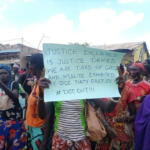Kenya’s labour market has remained almost unchanged since 2013 according to Kenya Institute for Public Policy Research and Analysis (KIPPRA’s) latest economic outlook.
This, in spite of the sector’s recovery to positive trends in 2021 after the Covid-19 induced negative growth the previous year.
The total employment has been growing at an average rate of about 5.07 per cent since 2013.
Highest recorded growth was in 2014 when it hit the 6.2 per cent mark. Last year, the growth stood at 5.3 per cent.
The employment sector is said to have equally stagnated despite Kenya’s progressive economic growth over the past years with an exception of 2020, the pandemic year.
According to the National Treasury, the country’s economic growth rose to an 11-year high last year recovering from the Covid-19 low of negative 0.3 per cent to 7.5 per cent.
The growth was also attributed to the reopening of various sectors of the economy, improved demand and removal of restrictions that disrupted economic activities.
Estimates by the Central Bank of Kenya further paints a more positive picture with 2021-2022 and 2022-2023 growth expected to land at 6.4 per cent and six per cent, respectively.
However, the relative employment rates still remain a concern amid its stagnated growth over the years.
According to the Kenya National Bureau of Statistics (KNBS), the unemployment rate in the country rose to 2.65 per cent in 2020 from 2.64 per cent in 2019.
As of this year, the population that is hardest-hit by unemployment, the youth, is estimated at 38.9 per cent, with an approximate of 800,000 young people getting into the labor market every year from institutions of higher learning.
Kenya is currently listed as the country with the largest number of unemployed youths in East Africa, according to World Bank.
Advertise with us: Call 0711 046 000 · [email protected]



